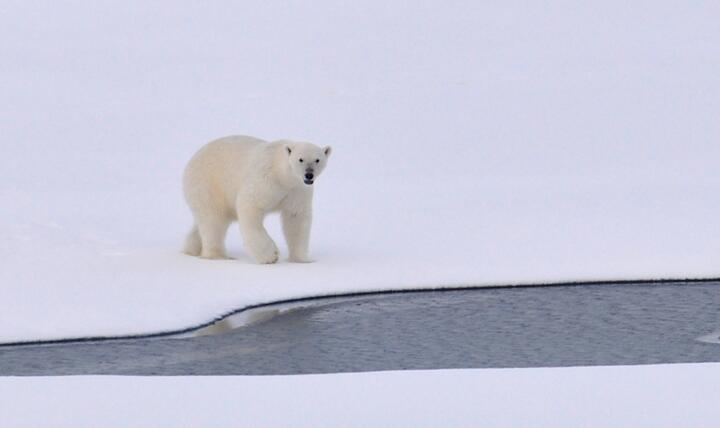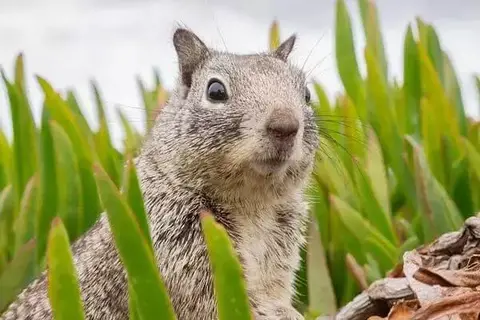Polar Bear Life Cycle: Life And Facts
Karla MillerThe polar bear is a predator, which is part of the Class of Mammalia, the family of Ursidae. This unique mammal is one of the endangered species. It lives in the north, eats fish and smaller animals, sometimes attacks a man. Just a few centuries ago, its population exceeded hundreds of thousands of individuals, but their systematic destruction forced nature defenders to sound the alarm.
Where does a polar bear live?
 Photo by Pixabay on pexels
Photo by Pixabay on pexelsThe polar bear lives exclusively in the circumpolar areas of the northern hemisphere, but this does not mean that the animal lives everywhere where the Arctic snow is not melting. Most bears do not go beyond 88 degrees north latitude, the extreme point of their distribution in the south is the island of Newfoundland, the small inhabitants of which, daily risk their lives trying to get along with a dangerous predator.
The inhabitants of the Arctic and tundra zones of Russia, Greenland, the United States, and Canada are also well acquainted with the white bear. Most animals live in areas with drifting, perennial ice, where many seals and walruses also live. Most often, a bear can be seen near a large ice-hole, on the edge of which it stops waiting for the seal, or sea bear to rise from the depths.
The polar bear’s endurance
The polar bear is an extremely hardy animal, despite its seeming clumsiness, it can travel up to 5.6 kilometers per hour on land and up to 7 kilometers per hour on the water. The average speed of the predator is 40 kilometers per hour.
Polar bears can hear and see well, and an excellent sense of smell allows you to smell the prey that is located at a distance of 1 kilometer. The animal can detect a seal hidden under a few meters of snow, or hiding at the bottom of the ice-hole, even if it is more than 1 meter deep.
How long does a polar bear live?
Strange as it may seem, polar bears live longer in captivity than in the natural habitat. The average life expectancy in this case does not exceed 20-30 years, while the inhabitant of the zoo is quite able to live over 45-50 years. This is due to the dwindling food base, the annual meeting of glaciers, and the continuous extermination of predators by humans.
Features of character and way of life
Polar Bear is considered a violent predator, attacking even people. The animal prefers a single way of life, males and females gather together only during the race. At the same time, bears move only on their own, conquered from their other brothers, the territory, and this applies not only to males, but also females with newborn offspring.
Winter hibernation
Unlike its brown brothers, the polar bear may not hibernate in winter. Most often, only pregnant females sleep on the eve of childbirth. Adult males do not sleep every season, the duration of hibernation is no more than 80 days (brown bear sleeps from 75 to 195 days a year).
The Life Cycle of a Polar Bear
 Photo by Pixabay on pexels
Photo by Pixabay on pexelsThe polar bear life cycle is very simple and interesting. The female polar bear will spend her entire pregnancy nursing her cubs until the birth of the cubs. Then, she will come out of her den and hunt seals for the family. The mother will also teach her cubs how to survive in the Arctic. The cubs will stay with the mother for 30 to 36 months while she feeds and rears them.
The first phase of a polar bear’s life cycle is the mating process. This occurs on sea ice in the months of April and May. Males fight to win the female, but the fights never go to death. A male will leave a female scarred from a recent battle. The two will remain together for about a week, and they will eventually split up. During the polar bear life cycle, the cubs will start to hunt, and the adult female bears will begin to hunt.
The polar bear life cycle has different stages, but the cubs are born in the fall when the temperatures of the Arctic warm. During this time, the cubs will not become pregnant, but they will learn how to hunt from their mother. During this time, the female will be protected by her cubs, as she will be protecting them. This period is known as the ‘moon’, which means the female will be giving birth to a litter of one to four cubs.
Once the cubs reach a year of age, they stay with the mother for about two years. They will learn how to survive in the cold climate and hunt on their own. In addition to the mother, the male polar bears will fight and mate with other males. When the females mature and can mate, they will bury the males and leave the female alone. When they are six to ten years old, they will reach sexual maturity and start breeding.
Once a female polar bear has a litter of cubs, she will have a gestation period. The pregnancy period lasts for about three years. This gives the female a chance to evaluate her condition. She will also be able to keep her offspring for about three years. The next phase of the polar bear life cycle is the birth of a baby. It is crucial for a healthy environment in order to keep the polar bears happy.
Male polar bears start looking for mates during the spring. Once they find a partner, they begin looking for a place to mate. This is important because a female will not give birth until the fall, which means that the baby will be born without any fat. During this time, the polar bears are active, and they will start hunting after the male has left the female. However, the mate will stay with the female until the snow covers the entrance of the den.
The female polar bears become sexually mature when they are between four and six years old. Then, they begin looking for mates by following scent foot trails. They will also try to find a mate when it is warmer, but the male will leave after a couple of days. After the mate has found a partner, the pregnant female polar bear will start looking for a place to den. Then, she will dig a snow cave and wait until the snow blocks the entrance.
The polar bears are slow-growing and produce small litters. They reach breeding age late and produce very few young in their lifetime. The female mates on the sea ice in the spring. The male leaves the female after a couple of days to continue his search. After mating, the male polar bear stays with the pregnant female for a few days before he leaves her to find another mate. Then, the mate is ready to eat.
A female polar bear’s life cycle begins with a birth. The female is the first to give birth. Her cubs are born around December. During this time, the female bear will care for the cubs. During the spring, the female polar bear will give birth to her first baby. It will take about two years for the male to complete the whole life cycle. After the mating, the male will leave the mother and the cubs.
- DogsWhat You Should Know About Your Dog’S Food

- WildlifeInteresting Facts About Hermit CrabsBy Evelyn Star

- BirdsThe Cockatoos Danced To The Anthem Of The Fight Against CoronavirusBy Camilo Walker

- Rodents20 Interesting Facts About RodentsBy Murphy Scott

- WildlifeWhat Is The Elephant’S Weight?By Charlotte Green

- WildlifeInteresting Maned Wolf FactsBy Camilo Walker

- Rodents7 Interesting Facts About LemursBy Camilo Walker

- DogsChihuahua Dog LifespanBy Noah Young

- Wildlife35 Interesting Facts About LionsBy Khai Dove

- InsectsByasa Alcinous ButterflyBy Nolan Foster
